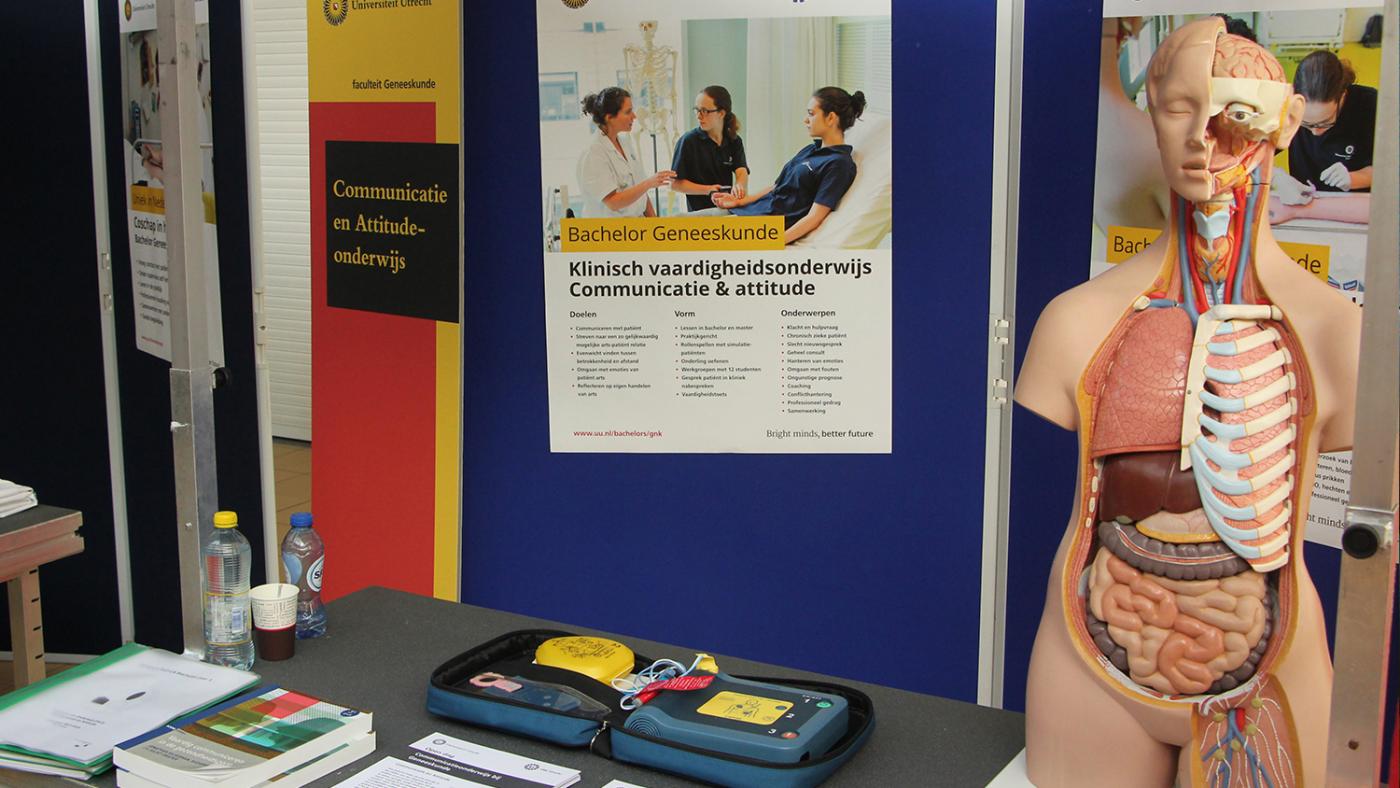Medicine curriculum not diverse enough
‘Most of the images in our study materials are of white people’

This is the conclusion of a study of the curriculum performed by UMCU's diversity and inclusion research group. For this research, twenty Medicine students were asked about their experiences with inclusion and diversity in the study programme. The respondents themselves formed a diverse group with various social backgrounds, religions, sexual orientations and genders.
It turns out that Medicine students are missing information about “non-Dutch cultures” and “people who don’t look like they do” but to whom they will soon be providing care.
According to them, the curriculum does not pay enough attention to the communication between doctors and patients from other cultures. There's also a perceived lack of diversity in the study material and the cases discussed, not to mention that teachers sometimes use stereotyped examples in class. White men still seem to be the standard in the study of Medicine, both on the work floor (hospitals) as well as in science, where most research is performed on men.
Diverse society
Anne-Roos Verbree, the Educational scientist who conducted the research, observes that the students who participated in the research are not an accurate reflection of the Medicine programme; perhaps they are more aware of this topic.
The study is part of an incentivisation done by UMCU with the aim to improve diversity and inclusion in education. According to Verbree, this makes the results extremely valuable.
“This indicates that work still needs to be done to make the curriculum more diverse. Some students will appreciate this more than others but, ultimately, all Medicine students will end up working in a diverse society."
Once they become doctors, the students will be providing care to all sorts of patients that differ in gender, sex, ethnicity, nationality, age, religion, sexual orientation and able-bodiedness. “In addition, there is an increasing realisation in the Medicine field that the curriculum isn’t diverse enough, even though it is important to prepare students for a diverse group of patients. It’s a substantial and complex task.”
Understanding each other
Verbree says that, when communicating with patients, Medicine students should be aware of the fact that they are doing so the "Dutch way." She explains: “Dutch communication can be extremely to the point. In some cultures, things can be very different, such as the way people talk about death or how a doctor handles bad news. Patients can also feel a bit of embarrassment or shame with regards to certain topics or have a different view on the authority of a doctor.”
“Combined, many factors determine how we communicate with each other. In order to come up with a suitable treatment, it’s crucial for the doctor to know the symptoms the patient has. If you’re not facing differences in communication until you start actually practising Medicine, that’s pretty hard. It's nice when students get to already practise this in their studies."
Different skin tones
In addition, students point out that the images in the study material are not very diverse. A student noted that most humans depicted in those materials are fair-skinned and images of people with dark complexions are hard to come by.
Doctors need a complete understanding of diseases to be able to provide care. Some conditions look different or are less visible on dark skin, Verbree explains. “How can you tell when someone with a dark skin tone looks pale? Those are examples that students don’t come across.”
At Dermatology, images of patients with different skin colours have been added to the lectures several years ago, after a study conducted by a student showed that those examples were missing. "Ultimately, something like this should be integral to the Medicine curriculum, not just to a particular lecture.”
Stereotypes
Moreover, the respondents said that teachers use materials and case studies that are sometimes stereotypical. For example, homosexuality is often linked to HIV or an increased risk of contracting STDs. "Students reported that, when homosexuality was mentioned in class at all, the answer was almost always 'HIV'. That is not a nuanced picture," Verbree states.
But, according to her, transferring knowledge in a proper, non-stereotypical way, can be challenging as well. “Teachers must provide certain information about diseases but it’s also important to name the population groups in which these diseases occur more often.”
One option would be to explain the context in more detail, not just the facts. "Why is it that certain diseases are more common among a certain group? What preventive measures can you take? What other factors are involved?"
Verbree acknowledges that opinions are divided in the Medicine programme when it comes to adding non-relevant information to cases. "A gay man can also have a heart attack but should a teacher say something about someone's sexual orientation in a case study about heart attacks?"
“It's an interesting and substantive discussion to take forward so that students are well prepared to provide suitable care to a diverse population of patients.”
As part of the Inclusive Curriculum and Learning Environment project, the Faculties of Medicine, Law, Economics, Governance and Organisation (REBO) and Social Sciences are working together to promote diversity and inclusion in education. The project team has developed a toolbox to help teachers reflect on their curriculum and teaching practices, such as learning objectives, teaching methods, and assessments.